Description
Advertising and Promotion An Integrated Marketing Communications Perspective Belch 10th Edition Test Bank
Advertising and Promotion An Integrated Marketing Communications Perspective Belch 10th Edition Test Bank
***THIS IS NOT THE ACTUAL BOOK. YOU ARE BUYING the Test Bank in e-version of the following book***
Name: Advertising and Promotion An Integrated Marketing Communications Perspective
Author: Belch
Edition: 10th
ISBN-10: 0078028973
Type: Test Bank
– The test bank is what most professors use an a reference when making exams for their students, which means there’s a very high chance that you will see a very similar, if not exact the exact, question in the test!
– The file is either in .doc, .padf, excel, or zipped in the package and can easily be read on PCs and Macs.
– Delivery is INSTANT. You can download the files IMMEDIATELY once payment is done.
If you have any questions, please feel free to contact us. Our response is the fastest. All questions will always be answered in 6 hours., most of the time within 30mins
We also faced similar difficulities when we were students, and we understand how you feel.
But now, with the Advertising and Promotion An Integrated Marketing Communications Perspective Test Bank, you will be able to
* Anticipate the type of the questions that will appear in your exam.
* Reduces the hassle and stress of your student life.
* Improve your studying and also get a better grade!
* Get prepared for examination questions.
*Can save you time and help you understand the material.
This is the quality of service we are providing and we hope to be your helper.
Delivery is in the next moment. Test Bank is accurate.
Prepare to receive your Advertising and Promotion An Integrated Marketing Communications Perspective Test Bank in the next moment.
If you have any questions, or would like a receive a sample chapter before your purchase, please contact us at inquiry@testbankcorp.com
Advertising and Promotion An Integrated Marketing Communications Perspective Test Bank
Advertising and Promotion An Integrated Marketing Communications Perspective Belch 10th Edition Test Bank ISBN: 0078028973
Chapter 01
An Introduction to Integrated Marketing Communications
True / False Questions
1. Nontraditional media account for the majority of companies’ marketing communications expenditures.
True False
2. Not all marketing transactions involve the exchange of money for a product or service.
True False
3. The status gained from owning a particular brand is an example of a functional benefit.
True False
4. As marketers embraced the concept of integrated marketing communications, they began to rely primarily on media advertising.
True False
5. The integrated marketing communications approach calls for a centralized messaging function so that everything a company says and does communicates a common theme and positioning.
True False
6. The goal of integrated marketing communications (IMC) is to generate both short-term financial returns and build long-term brand and shareholder value.
True False
7. The integrated marketing communications (IMC) approach to marketing communications planning and strategy is popular among business-to-business marketers.
True False
8. There has been an evolution to micromarketing as the mass audience assembled by network television and augmented by other mass media is fragmenting at an accelerating rate.
True False
9. Most consumers in generation Y are very receptive to traditional advertising.
True False
10. The nonpersonal nature of advertising means that there is generally ample opportunity for immediate feedback from the message recipient.
True False
11. Primary-demand advertising focuses on creating demand for a specific company’s brands.
True False
12. Business-to-business advertising is limited to industrial goods; services such as insurance and travel service are not included in this category.
True False
13. Advertising targeted to professionals such as doctors, lawyers, dentists, engineers, or professors to encourage them to use a company’s product in their business operations is referred to as trade advertising.
True False
14. Unexpected touch points are unanticipated references or information about a company or brand that a customer or prospect receives that is beyond the control of the organization.
True False
15. The first step in the IMC planning process is to review the marketing plan and objectives.
True False
16. Companies or brands that are new to the market or those for whom perceptions are negative should focus on the benefits or attributes of the specific product or service, and not on their image.
True False
17. Analysis of the communication process may involve preliminary discussions on media-mix options and their cost implications.
True False
Multiple Choice Questions
18. Which of the following is an example of a marketing exchange?
A. The waitress gave Cyrus a menu and he placed his food order.
B. Griffin helped Mandy replace the air filter in her lawn mower.
C. Ken and Maggie gave their son an MP3 player for his birthday.
D. Mrs. Maloney gave Larry a box of homemade fudge in return for painting her fence.
E. Jenny asked Melisa if she could borrow her pen for a while since her pen had stopped working.
19. According to the American Marketing Association’s definition of marketing, which of the following statements is true?
A. Most marketers are seeking a one-time exchange or transaction with their customers.
B. The focus of production-driven companies is on developing and sustaining relationships with their customers.
C. Successful companies recognize that creating and delivering value to their customers is extremely important.
D. Though marketing plays an important role in developing relationships with customers, it does not help in maintaining them.
E. By definition, a marketing transaction has to involve the exchange of money.
20. Which of the following statements best defines value?
A. The coordination of all seller-initiated efforts to set up channels of information and persuasion in order to sell goods and services or promote an idea
B. The combination of factors like name, logo, design, and packaging that comes to mind when consumers think about a brand
C. The desire and ability of two or more parties to exchange something of importance with one another
D. The customer’s perception of all of the benefits of a product or service weighed against all the costs of acquiring and consuming it
E. The amount of funds invested by the shareholders of a company in promoting its product portfolio
21. Product, price, promotion, and _____ are the 4Ps of the marketing mix.
A. people
B. place
C. package
D. print
E. privilege
22. Price, product, place, and promotion together form the:
A. points-of-parity.
B. promotional mix.
C. marketing mix.
D. supply chain components.
E. exchange mix.
23. Prior to the development of integrated marketing communications, the promotional function in most companies was dominated by:
A. mass-media advertising.
B. sales promotion.
C. public relations.
D. publicity.
E. direct marketing.
24. CL Inc., a new firm, used mass media to gain traction among customers. The company used sales promotions and public relations to achieve the long-term targets and goals identified by the top management. It also opted for direct marketing on a project-to-project basis. The assimilation of these various promotional tools is commonly referred to as:
A. bait-and-switch marketing.
B. sales promotion activities.
C. integrated marketing communications.
D. double loop marketing.
E. segmented marketing communications.
25. The process of assimilating mass-media advertisements with other promotional elements such as direct marketing, public relations, and sales promotion is known as:
A. switch marketing.
B. micro-marketing.
C. integrated marketing communications.
D. buzz marketing.
E. bait-and-switch marketing.
26. Which of the following best defines integrated marketing communications?
A. It is a term used in cause marketing that speaks about the degree of control customers hold over the cause they choose to support.
B. It involves coordinating the various promotional elements and other marketing activities that interact with a firm’s customers.
C. It is software that gathers and analyzes information about customer interactions with all the employees of a company.
D. It is a collection of informational resources that describes a company’s products and services and assists in marketing the same.
E. It involves dividing the customers into similar subgroups based on media usage, demographics, psychographics, and product usage.
27. Which of the following is true of integrated marketing communication?
A. It does not include sales promotion.
B. It calls for a “big picture” approach to promotional activities.
C. It segregates and highlights various promotional activities.
D. It is also typically referred to as buzz marketing.
E. It personifies advertising as the dominant form of promotion.
28. The central theme of the concept of _____ is that all of an organization’s promotional elements and marketing activities reach out consistently and in a unified manner with its customers.
A. the marketing mix
B. audience segmentation
C. integrated marketing communications
D. the promotional mix
E. cumulative prospect theory
29. According to the American Association of Advertising Agencies, _____ is a concept of marketing communications planning that recognizes the added value of a comprehensive plan that evaluates the strategic role of a variety of communication disciplines and combines them to provide clarity, consistency, and maximum impact.
A. experiential marketing
B. buzz marketing
C. double-loop marketing communications
D. integrated marketing communications
E. bait marketing
30. In the advertising industry, terms such as new advertising, orchestration, and seamless communication were used to describe the concept of:
A. positioning.
B. integration.
C. channel conflict.
D. relationship marketing.
E. diffusion.
31. The 4A’s definition of integrated marketing communications focuses on:
A. the organizations creating a sustainable supply chain for developing a socially responsible business.
B. the fact that nonpersonal communications must be totally avoided for a better communications impact.
C. the employees keeping track of future prospects by maintaining a customer interaction tracker.
D. the development of bait-and-switch marketing activities in all organizations.
E. the process of using all forms of promotion to achieve maximum communication impact.
32. The primary goal of an integrated marketing communications program is to:
A. have a company’s entire marketing and promotional activities project a consistent, unified image to its customers.
B. control all facets of a product’s distribution.
C. communicate with customers primarily through mass-media advertising.
D. have complete control over all the channel partners in the distribution channel and to slow down the rate of diffusion of a new product among the customers.
E. create a strong distribution network, via marketing, which is capable of destabilizing any competition.
33. According to the definition of integrated marketing communications (IMC) given by Don Schultz, which of the following is true of IMC?
A. It is a tactical integration of various communication activities.
B. It does not view the audience as an important part of the IMC process.
C. It does not view the employees as an important part of the IMC process.
D. It is viewed as an ongoing strategic business process.
E. It simply involves bundling promotional mix elements together.
34. _____ has been described as one of the “new-generation” marketing approaches being used by companies to better focus their efforts in acquiring, retaining, and developing relationships with customers and other stakeholders.
A. Decentralized communication systems
B. Bait-and-switch marketing approach
C. Integrated marketing communications
D. Mass media advertising
E. Customer newsletter service
35. To respond to media fragmentation, marketers are increasing their spending on:
A. mass media communication.
B. television advertising.
C. micromarketing.
D. mass production.
E. product packaging.
36. Ultra-Long deodorant’s tagline says “Timely strength for the match of life.” Ads for the product feature a baseball star saying, “You need extra muscle when your day goes into extra time,” appear regularly on television and in print media. At the same time, Ultra-Long runs a sweepstakes contest for its customers. To enter the contest, customers have to fill out a $1-off coupon. Through the use of IMC, Ultra-Long is hoping to primarily create _____ for its new product.
A. brand evangelism
B. brand dilution
C. brand language
D. brand identity
E. brand repositioning
37. _____ is the sum of all points of encounter or contact that consumers have with the brand, and it extends beyond the experience or outcome of using it.
A. Brand evangelism
B. Brand identity
C. Brand extension
D. Brand differentiation
E. Brand engagement
38. _____ has long been the cornerstone of brand building efforts for many companies.
A. Interactive media
B. Mass-media advertising
C. Online marketing
D. Product placement
E. Personal selling

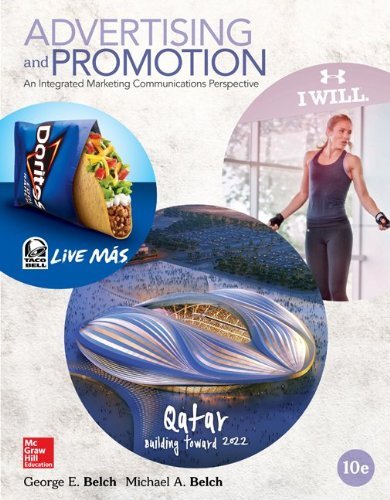
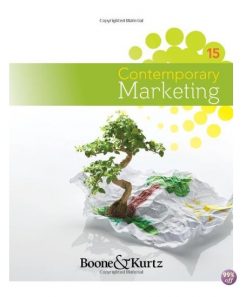
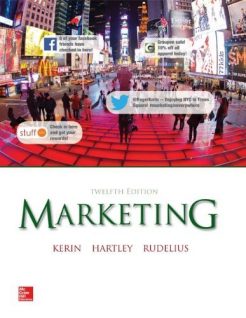
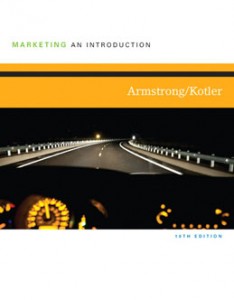
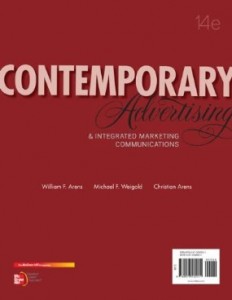

Reviews
There are no reviews yet.